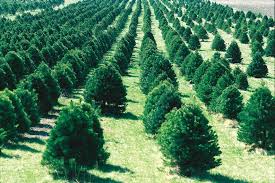 From age-old pests to new and emerging diseases, the threats to nurseries and tree farms come from every angle. Every manager knows that the key to healthy plants is the prevention of disease outbreaks, but prevention requires constant vigilance. Rather than keeping track of individual diseases, a better solution may involve keeping track of common sources of infection to reduce and eliminate pathogens of all types.
From age-old pests to new and emerging diseases, the threats to nurseries and tree farms come from every angle. Every manager knows that the key to healthy plants is the prevention of disease outbreaks, but prevention requires constant vigilance. Rather than keeping track of individual diseases, a better solution may involve keeping track of common sources of infection to reduce and eliminate pathogens of all types.
Growth Media
The primary source of disease in nurseries is contaminated growth media. Everything from soil to sand to peat moss can host to a variety of pathogens. To avoid contamination, it is crucial to use only sterile growth media. Managers should purchase mixes that have been treated to kill pathogens and test media before using it. Unfortunately, these measures are not enough to ensure continued disease-free growth because wind, workers, animals, machinery, and tools can all transfer pathogens to sterile media.
To prevent contamination of soil after planting, plants should be kept off of the ground at all times when possible. Tools should be cleaned and disinfected (this includes hand tools, power tools, and even attachments like tree movers and augers). All growth media should be covered by a piece of porous plastic and a layer of stones. When planting directly in the ground, both sterilization and suppression measures should be taken before planting.
Water
Water drawn from lakes, streams, ponds, and even wells is often contaminated with fungi, which lay dormant in the sediment. If it is not possible to purify water before use, care should be taken to avoid drawing up sediment that is the primary source of dormant pathogens. Recycled water can also be problematic if it is not purified.
Debris
Almost all pathogens live out some part of their life cycle in a dormant state within plant material. They can survive extremes of both temperature and moisture in dormant states, sometimes for years. All plant debris should be immediately removed and, preferably, disposed of either through burial or burning. It is important that disposal sites be far removed from living plants so as to avoid contamination. Anyone handling plant debris should take care to change their clothes and clean their shoes and tools before working with living plants.
Air
Pathogens spread through the air are difficult to control. The best solutions for dealing with the enormous numbers of spores that can be generated by wild plants is to eliminate non-crop plants within and around the nursery. In addition, it may be wise to construct a barrier on the windward side of a nursery or field in an effort to reduce the number of spores entering a sensitive area.
Resources
http://www.newenglandgrows.org/handouts/2009/SharonDouglasHandout.pdf
http://extension.psu.edu/pests/plant-diseases/all-fact-sheets/sources-of-disease-in-nurseries
https://edis.ifas.ufl.edu/ep380

